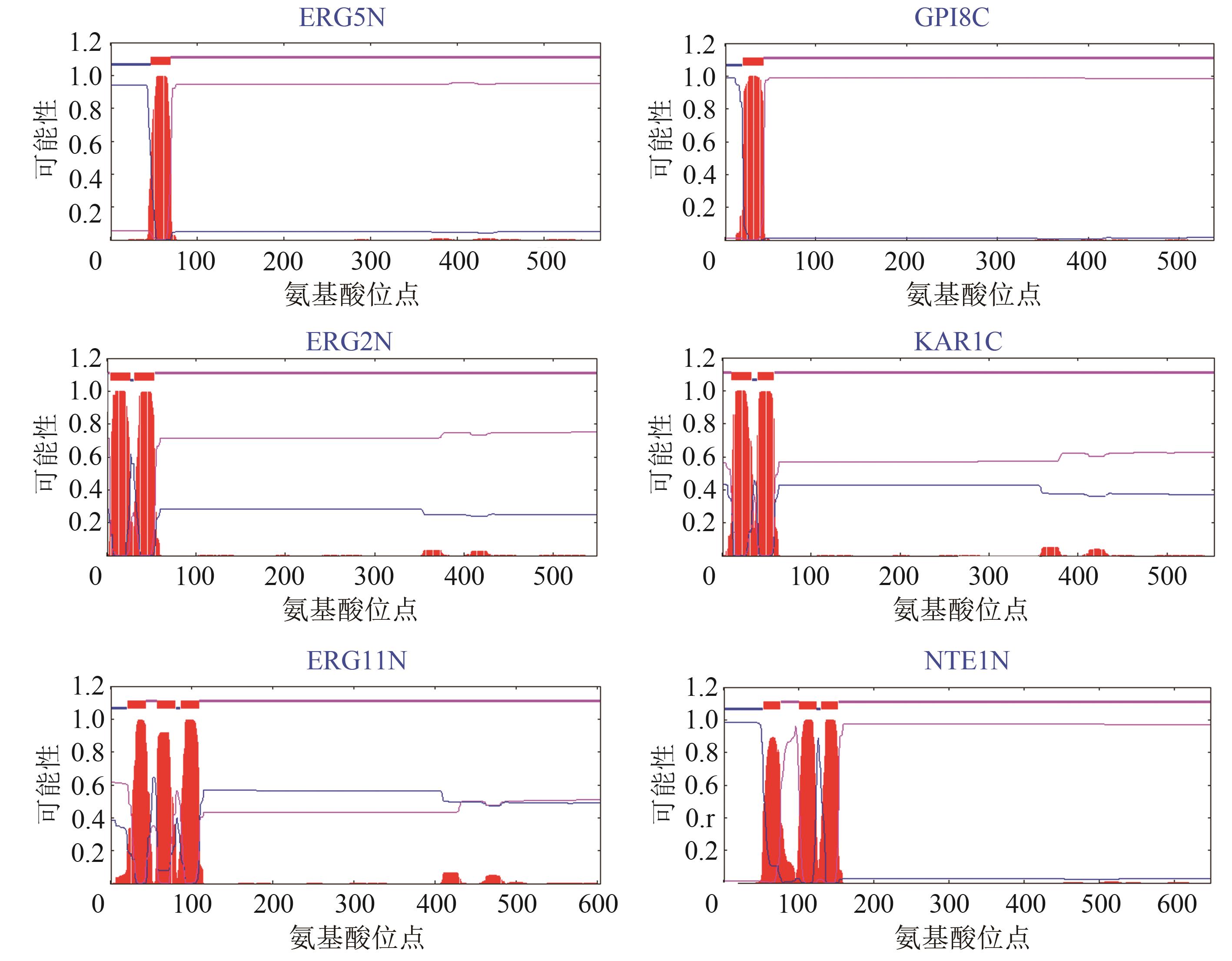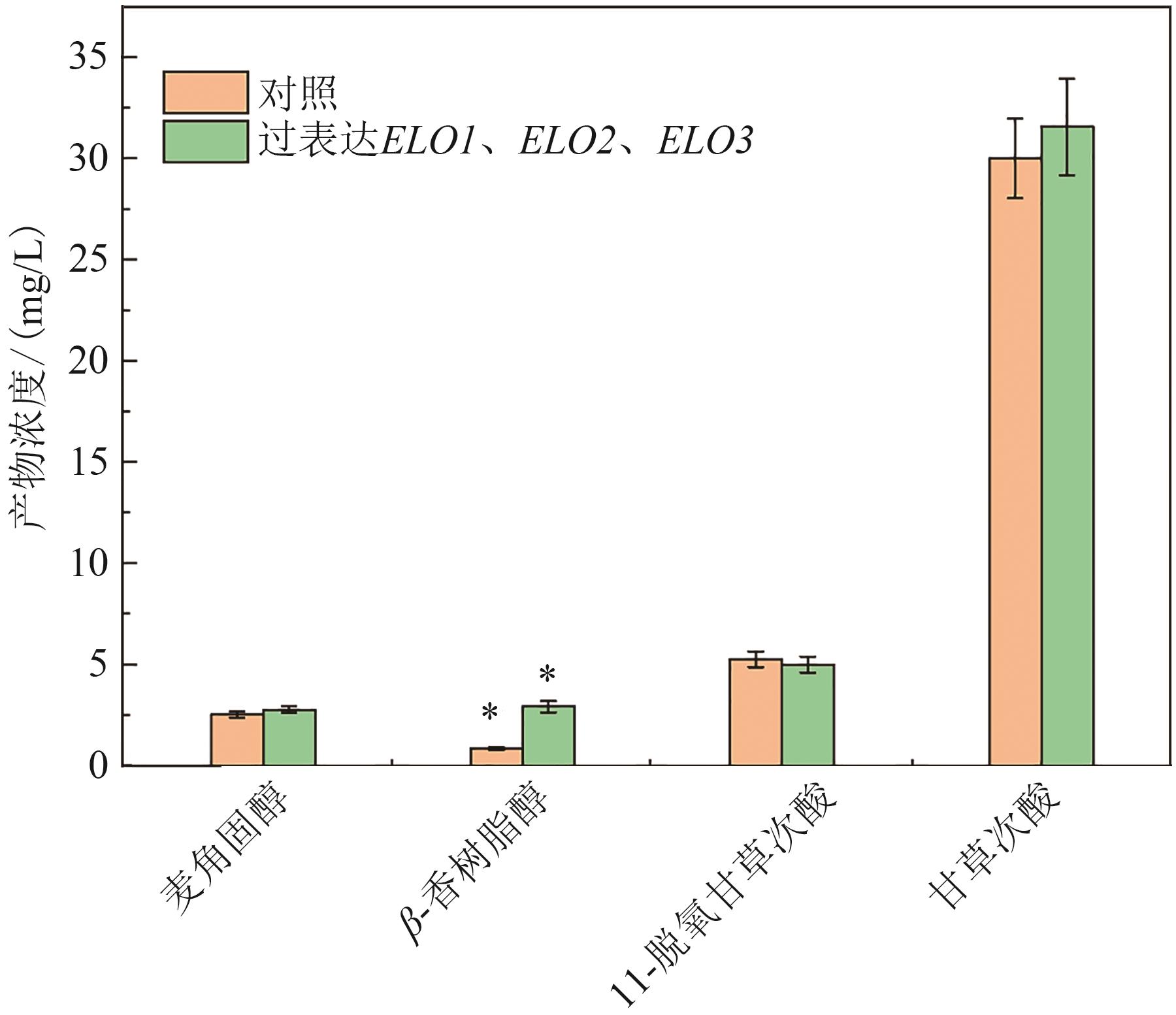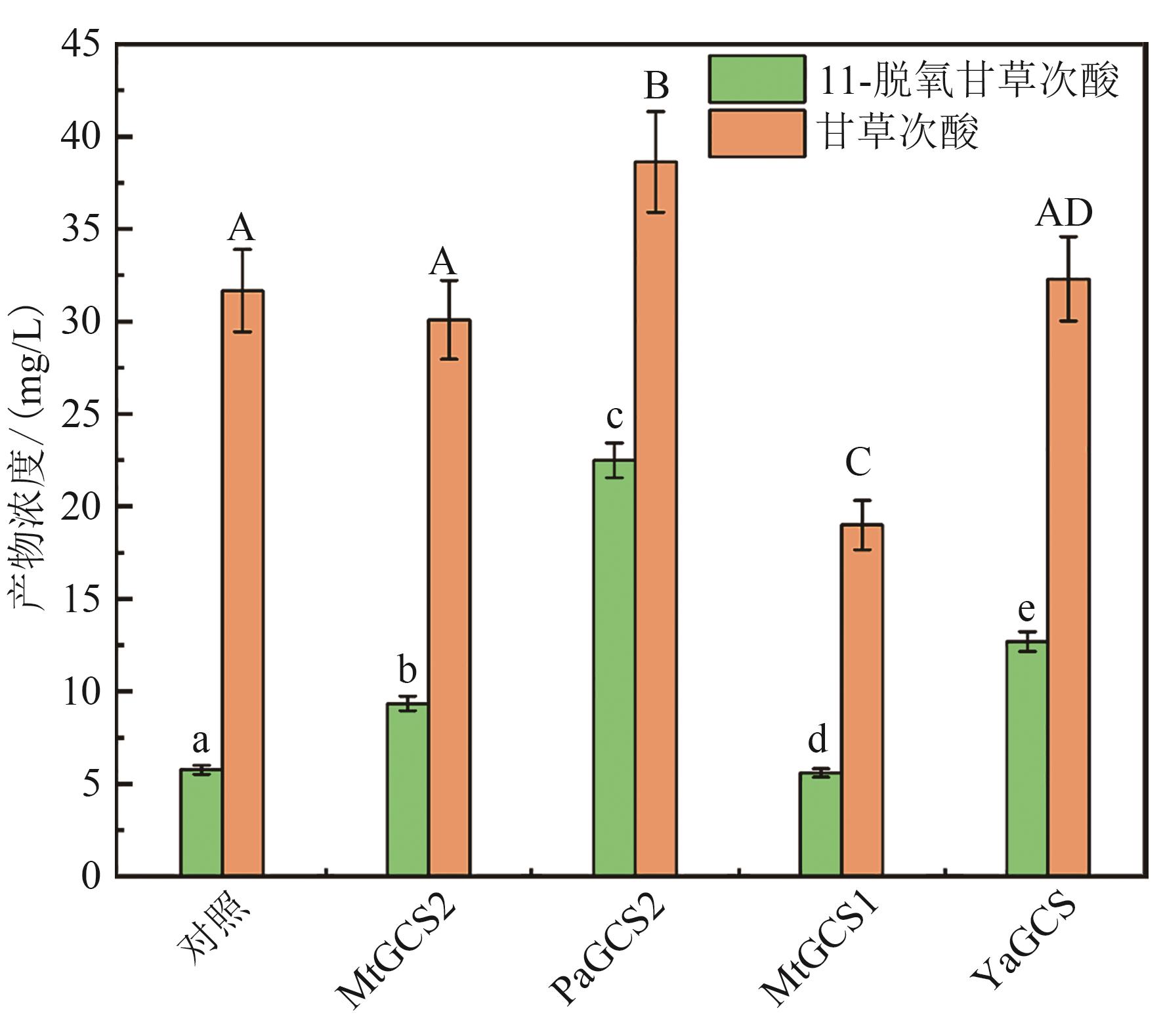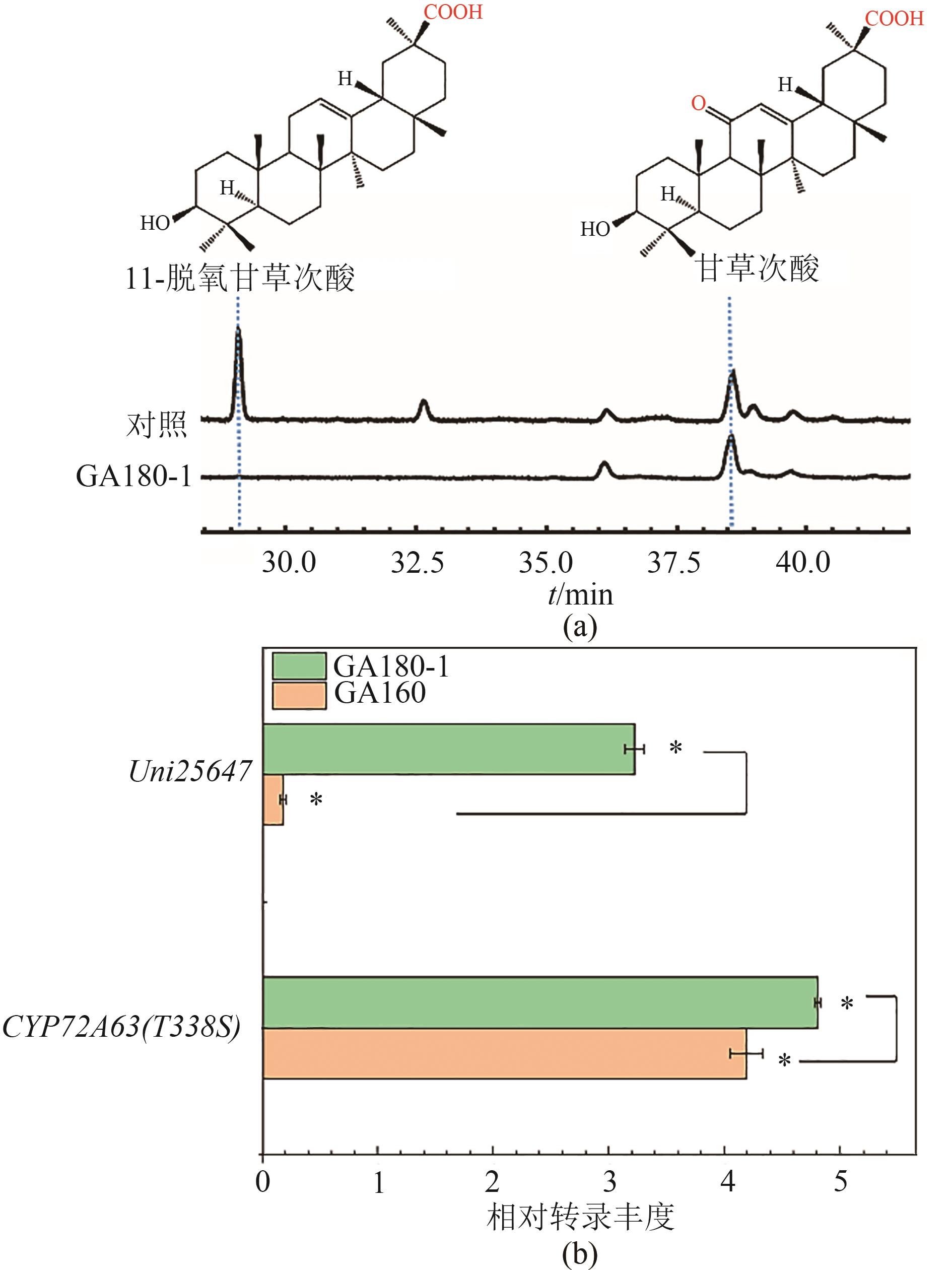| 1 |
CHEMLER J A, KOFFAS M A. Metabolic engineering for plant natural product biosynthesis in microbes[J]. Current Opinion in Biotechnology, 2008, 19(6): 597-605.
|
| 2 |
SCHLÄGER S, DRÄGER B. Exploiting plant alkaloids[J]. Current Opinion in Biotechnology, 2016, 37: 155-164.
|
| 3 |
CHANG M C, EACHUS R A, TRIEU W, et al. Engineering Escherichia coli for production of functionalized terpenoids using plant P450s[J]. Nature Chemical Biology, 2007, 3(5): 274-277.
|
| 4 |
GRANDNER J M, CACHO R A, TANG Y, et al. Mechanism of the P450-catalyzed oxidative cyclization in the biosynthesis of griseofulvin[J]. ACS Catalysis, 2016, 6(7): 4506-4511.
|
| 5 |
IGNEA C, ATHANASAKOGLOU A, IOANNOU E, et al. Carnosic acid biosynthesis elucidated by a synthetic biology platform[J]. Proceedings of the National Academy of Sciences of the United States of America, 2016, 113(13): 3681-3686.
|
| 6 |
PARK H, PARK G, JEON W, et al. Whole-cell biocatalysis using cytochrome P450 monooxygenases for biotransformation of sustainable bioresources (fatty acids, fatty alkanes, and aromatic amino acids)[J]. Biotechnology Advances, 2020, 40: 107504.
|
| 7 |
NABAVI S M, ŠAMEC D, TOMCZYK M, et al. Flavonoid biosynthetic pathways in plants: Versatile targets for metabolic engineering[J]. Biotechnology Advances, 2020, 38: 107316.
|
| 8 |
SEKI H, SAWAI S, OHYAMA K, et al. Triterpene functional genomics in licorice for identification of CYP72A154 involved in the biosynthesis of glycyrrhizin[J]. The Plant Cell, 2011, 23(11): 4112-4123.
|
| 9 |
SEKI H, OHYAMA K, SAWAI S, et al. Licorice β-amyrin 11-oxidase, a cytochrome P450 with a key role in the biosynthesis of the triterpene sweetener glycyrrhizin[J]. Proceedings of the National Academy of Sciences of the United States of America, 2008, 105(37): 14204-14209.
|
| 10 |
DENISOV I G, MAKRIS T M, SLIGAR S G, et al. Structure and chemistry of cytochrome P450[J]. Chemical Reviews, 2005, 105(6): 2253-2277.
|
| 11 |
CHEN J, FAN F, QU G, et al. Identification of Absidia orchidis steroid 11β-hydroxylation system and its application in engineering Saccharomyces cerevisiae for one-step biotransformation to produce hydrocortisone[J]. Metabolic Engineering, 2020, 57: 31-42.
|
| 12 |
SCHELER U, BRANDT W, PORZEL A, et al. Elucidation of the biosynthesis of carnosic acid and its reconstitution in yeast[J]. Nature Communications, 2016, 7: 12942.
|
| 13 |
CHEN W, FISHER M J, LEUNG A, et al. Oxidative diversification of steroids by nature-inspired scanning glycine mutagenesis of P450BM3 (CYP102A1)[J]. ACS Catalysis, 2020, 10(15): 8334-8343.
|
| 14 |
LI Y, WONG L L. Multi-functional oxidase activity of CYP102A1 (P450BM3) in the oxidation of quinolines and tetrahydroquinolines[J]. Angewandte Chemie International Edition, 2019, 58(28): 9551-9555.
|
| 15 |
LE-HUU P, HEIDT T, CLAASEN B, et al. Chemo-, regio-, and stereoselective oxidation of the monocyclic diterpenoid β-cembrenediol by P450 BM3[J]. ACS Catalysis, 2015, 5(3): 1772-1780.
|
| 16 |
URLACHER V B, GIRHARD M. Cytochrome P450 monooxygenases in biotechnology and synthetic biology[J]. Trends in Biotechnology, 2019, 37(8): 882-897.
|
| 17 |
BRANDENBERG O F, FASAN R, ARNOLD F H. Exploiting and engineering hemoproteins for abiological carbene and nitrene transfer reactions[J]. Current Opinion in Biotechnology, 2017, 47: 102-11.
|
| 18 |
ZHANG R K, HUANG X, ARNOLD F H. Selective CH bond functionalization with engineered heme proteins: new tools to generate complexity[J]. Current Opinion in Chemical Biology, 2019, 49: 67-75.
|
| 19 |
BULLER A R, ROYE P VAN, CAHN J K B, et al. Directed evolution mimics allosteric activation by stepwise tuning of the conformational ensemble[J]. Journal of the American Chemical Society, 2018, 140(23): 7256-7266.
|
| 20 |
SUN W, XUE H, LIU H, et al. Controlling chemo- and regioselectivity of a plant P450 in yeast cell toward rare licorice triterpenoid biosynthesis[J]. ACS Catalysis, 2020: 4253-4260.
|
| 21 |
杨超凡,姜玉超,桑茉莉,等. 还原伴侣对细胞色素 P450 酶 MycG 的功能调控研究[J]. 合成生物学, 2021. doi: 10.12211/2096-8280.2021-053 .
|
|
YANG C F, JIANG Y C, SANG M L, et al. Studies on the functional modulating effects of redox partners on the cytochrome P450 enzyme MycG[J]. Synthetic Biology Journal, 2021. doi: 10.12211/2096-8280.2021-053 .
|
| 22 |
KROGH A, LARSSON B, HEIJNE G VON, et al. Predicting transmembrane protein topology with a hidden Markov model: application to complete genomes[J]. Journal of Molecular Biology, 2001, 305(3): 567-580.
|
| 23 |
ZHANG L, REN S, LIU X, et al. Mining of UDP-glucosyltrfansferases in licorice for controllable glycosylation of pentacyclic triterpenoids[J]. Biotechnology and Bioengineering, 2020, 117(12): 3651-3663.
|
| 24 |
ZHAO Y J, LI C. Biosynthesis of plant triterpenoid saponins in microbial cell factories[J]. Journal of Agricultural and Food Chemistry, 2018, 66(46): 12155-12165.
|
| 25 |
LIU H, FAN J, WANG C, et al. Enhanced β-amyrin synthesis in Saccharomyces cerevisiae by coupling an optimal acetyl-CoA supply pathway[J]. Journal of Agricultural and Food Chemistry, 2019, 67(13): 3723-3732.
|
| 26 |
ESPINOZA R V, SHERMAN D H. Exploring the molecular basis for selective C-H functionalization in plant P450s[J]. Synthetic and Systems Biotechnology, 2020, 5(2): 97-98.
|
| 27 |
ZHAO F, BAI P, LIU T, et al. Optimization of a cytochrome P450 oxidation system for enhancing protopanaxadiol production in Saccharomyces cerevisiae [J]. Biotechnology and Bioengineering, 2016, 113(8): 1787-1795.
|
| 28 |
MAMODE CASSIM A, GOUGUET P, GRONNIER J, et al. Plant lipids: Key players of plasma membrane organization and function[J]. Progress in Lipid Research, 2019, 73: 1-27.
|
| 29 |
BRIGNAC-HUBER L M, PARK J W, REED J R, et al. Cytochrome P450 organization and function are modulated by endoplasmic reticulum phospholipid heterogeneity[J]. Drug Metabolism and Disposition: the Biological Fate of Chemicals, 2016, 44(12): 1859-1866.
|
| 30 |
SEZGIN E, LEVENTAL I, MAYOR S, et al. The mystery of membrane organization: composition, regulation and roles of lipid rafts[J]. Nature Reviews Molecular Cell Biology, 2017, 18(6): 361-374.
|
| 31 |
HENRY S A, KOHLWEIN S D, CARMAN G M. Metabolism and regulation of glycerolipids in the yeast Saccharomyces cerevisiae [J]. Genetics, 2012, 190(2): 317-349.
|
| 32 |
ZHANG G, CAO Q, LIU J, et al. Refactoring β-amyrin synthesis in Saccharomyces cerevisiae [J]. AIChE Journal, 2015, 61(10): 3172-3179.
|
| 33 |
XIE Z X, LI B Z, MITCHELL L A, et al. "Perfect" designer chromosome V and behavior of a ring derivative[J]. Science, 2017, 355(6329): eaaf4704.
|
| 34 |
PARISI L R, SOWLATI-HASHJIN S, BERHANE I A, et al. Membrane disruption by very long chain fatty acids during necroptosis[J]. ACS Chemical Biology, 2019, 14(10): 2286-2294.
|
| 35 |
DICKSON R C. Thematic review series: sphingolipids. New insights into sphingolipid metabolism and function in budding yeast[J]. Journal of Lipid Research, 2008, 49(5): 909-921.
|
| 36 |
MASHIMA R, OKUYAMA T, OHIRA M. Biosynthesis of long chain base in sphingolipids in animals, plants and fungi[J]. Future Science OA, 2019, 6(1): FSO434.
|
| 37 |
RAMIREZ-GAONA M, MARCU A, PON A, et al. YMDB 2.0: a significantly expanded version of the yeast metabolome database[J]. Nucleic Acids Research, 2017, 45(D1): D440-D445.
|






